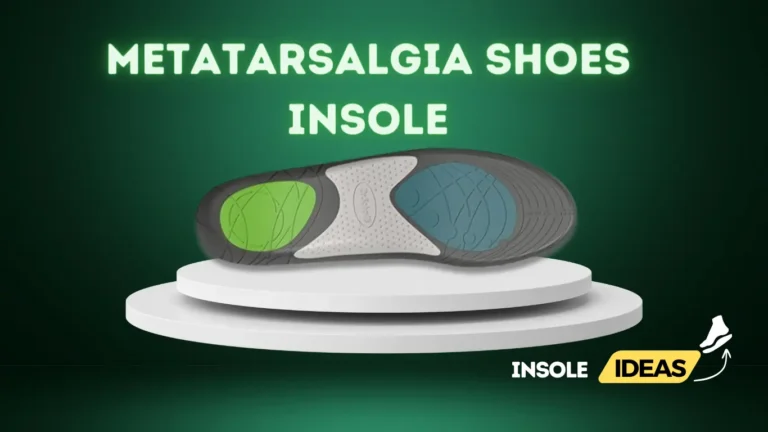Can Insoles help knee Pain
Exploring the Impact of Insoles on Alleviating Knee Pain
Knee pain is a prevalent condition affecting millions worldwide, often stemming from various causes like injuries, arthritis, or structural misalignments. This discomfort significantly impacts mobility and quality of life, prompting diverse approaches to manage and alleviate its effects. Insoles, as a non-invasive intervention, have garnered attention for their potential in mitigating knee pain and enhancing overall comfort during daily activities.
Brief Overview of Knee Pain
Knee pain is a complex issue encompassing discomfort, stiffness, or inflammation in or around the knee joint. It can arise from injuries, overuse, aging, or underlying health conditions like arthritis. The multifaceted nature of knee pain necessitates a nuanced approach towards its management and treatment.
The Role of Insoles in Pain Management
Insoles, also known as orthotics, are shoe inserts designed to provide support, cushioning, and alignment for the feet. Their role in managing knee pain revolves around correcting foot mechanics, thereby reducing stress on the knees. By redistributing pressure and improving foot posture, insoles aim to alleviate discomfort and improve overall functionality.
Significance of the Topic
Understanding the impact of insoles on knee pain is crucial due to its potential implications on healthcare. If proven effective, insoles could serve as a non-invasive, cost-effective method to alleviate knee discomfort, potentially reducing reliance on medications or invasive procedures. Additionally, exploring this topic enhances our comprehension of how foot support influences overall musculoskeletal health.
Understanding Knee Pain
Common Causes of Knee Pain
Acute injuries like fractures or ligament rips, chronic diseases like osteoarthritis or rheumatoid arthritis, overuse injuries from repetitive motions, and structural abnormalities like misaligned joints are just a few of the reasons of knee discomfort. For those who are having knee pain, figuring out the exact cause is essential to choosing the best course of action.Types of Knee Pain (e.g., Arthritis, Injuries)
Arthritis, specifically osteoarthritis, is a prevalent cause of knee pain characterized by the degeneration of joint cartilage. On the other hand, injuries like ligament sprains, meniscus tears, or tendonitis can lead to acute pain, swelling, and restricted movement. Distinguishing between these types is crucial in tailoring appropriate interventions and therapies for targeted relief.
Impact on Daily Life
Beyond only being physically uncomfortable, knee pain has an impact on everyday activities and general quality of life. Simple tasks like walking, climbing stairs, or even standing become arduous, limiting one’s mobility and independence. Addressing knee pain not only relieves the physical burden but also improves mental well-being and restores functional capabilities.
Mechanism of Knee Pain
Joint Alignment and Stress
The alignment of the knee joint plays a pivotal role in distributing weight and stress evenly across the joint surfaces. Misalignment can lead to uneven pressure, causing excessive strain on specific areas, contributing to pain and potential damage to surrounding tissues.
Strain on Knee Ligaments and Cartilage
Knee ligaments and cartilage are integral components maintaining joint stability and cushioning. Excessive strain due to misalignment, overuse, or injuries can compromise their integrity, leading to pain, inflammation, and reduced joint functionality.
Importance of Proper Foot Support
Proper foot support is crucial in ensuring optimal biomechanics, as it influences the alignment and function of the entire lower extremity. Insoles, by providing adequate support and alignment for the feet, aim to alleviate stress on the knees, promoting better posture and reducing discomfort.
Potential Risks and Precautions
Allergies and Sensitivities
While insoles generally serve as supportive aids, individuals might develop allergic reactions or sensitivities to materials used in their production. Various materials like latex, certain fabrics, or adhesives employed in insole manufacturing could trigger skin irritations, rashes, or allergic responses in susceptible individuals.
Overreliance on Insoles
One potential risk associated with insole usage is the tendency for users to overly rely on them as a sole solution for knee pain. Depending solely on insoles without addressing underlying issues such as muscle weakness, poor biomechanics, or systemic issues may give rise to a delusion of security.
Seeking Professional Guidance
Engaging with healthcare professionals or specialists, particularly podiatrists, orthopedists, or physiotherapists, is crucial when considering or using insoles for knee pain. Professional guidance ensures proper assessment, fitting, and alignment of insoles with individual needs. These experts can provide personalized recommendations, reducing the risk of improper use or exacerbating existing issues.
Allergies and Sensitivities
Materials used in insoles, like latex, synthetic fabrics, or adhesive components, may trigger allergic reactions in sensitive individuals. Latex allergies, for instance, can cause skin irritation or even severe allergic responses upon contact. Understanding the composition of insoles and being mindful of potential allergens is vital to prevent adverse reactions.
Overreliance on Insoles
While insoles offer support and comfort, relying solely on them to manage knee pain can mask underlying issues. Muscular weaknesses, joint misalignments, or biomechanical problems may persist without proper attention. Users should complement insole usage with exercises, physical therapy, or lifestyle adjustments for comprehensive pain management.
Seeking Professional Guidance
Consulting healthcare professionals ensures proper assessment and suitability of insoles for individual needs. These experts evaluate factors such as foot structure, gait patterns, and specific conditions to recommend suitable insoles or alternative treatments. Their expertise minimizes the risk of improper usage or exacerbation of existing knee issues.
Conclusion
Insoles serve as valuable aids in alleviating knee pain, but users must be aware of potential risks and exercise caution. Allergic reactions, overreliance, or improper usage could negate their benefits. Seeking professional guidance and being mindful of sensitivities ensures safe and effective utilization of insoles for knee pain management.
FAQs
Insoles offer support and alignment, aiming to reduce discomfort by addressing biomechanical issues. However, they aren’t a one-size-fits-all solution. While they can be beneficial for many individuals experiencing knee pain related to foot mechanics, their effectiveness varies. The effectiveness of insoles varies from person to person depending on factors including severity of the problem, unique foot anatomy, and underlying reason of knee discomfort. Consulting a healthcare professional helps determine if insoles are suitable for specific needs.
The timeline for experiencing noticeable effects from using insoles can differ among individuals. Some users might feel immediate relief in comfort and reduced pain, while others may require an adjustment period. Adaptation to insoles can take days to a few weeks as the body adjusts to the changes in foot support and alignment. Consistent usage, proper fitting, and adherence to recommendations from healthcare providers contribute to better and more rapid results.
Insoles play a preventive role by addressing biomechanical issues that could contribute to knee pain. Properly fitted insoles offer support, cushioning, and alignment, potentially reducing the risk of developing knee pain associated with poor foot mechanics or alignment issues. However, their preventive capacity might vary based on individual factors. Regular use of well-fitted insoles, along with maintaining good footwear and healthy habits, can aid in preventing or reducing the onset of knee pain for some individuals.


